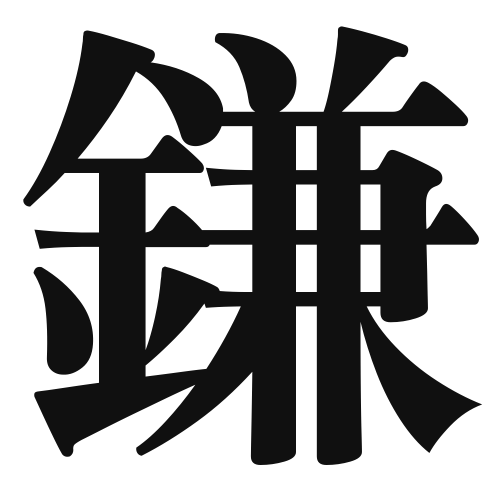1. Overview of Meaning
The kanji “鎌” (kama) means “sickle,” a farming tool used for cutting crops. It is often associated with agriculture and traditional farming practices in Japan.
2. Formation and Radical
Formation of the Kanji: The kanji “鎌” is a compound character (会意文字) that combines elements representing metal and a tool. The left part “金” (meaning metal) indicates that the sickle is often made of metal, while the right part “カマ” represents the shape and function of the tool.
Radical: The radical for “鎌” is “金” (kin), which relates to metal and is commonly found in kanji associated with tools and objects made of metal.
3. Examples of Usage
Common Words and Phrases:
- 鎌 (kama) – sickle
- 鎌倉 (Kamakura) – a city in Japan known for its historical significance and temples.
Example Sentences in Daily Conversation:
- 農家は鎌を使って稲を刈ります。 (Nōka wa kama o tsukatte ine o karimasu.) – The farmer uses a sickle to harvest rice.
- 鎌を持って、畑に行きます。 (Kama o motte, hatake ni ikimasu.) – I will take the sickle and go to the field.
4. Synonyms and Antonyms
Similar Kanji:
- 刃 (ha) – blade; refers to the cutting edge of a tool, but is more general and not specific to sickles.
- 斧 (ono) – axe; another cutting tool, but used for chopping rather than harvesting.
Antonyms:
- 育てる (sodateru) – to grow; the opposite of cutting or harvesting.
5. Cultural and Historical Background
Relation to Japanese Culture: The sickle has been an essential tool in traditional Japanese agriculture, symbolizing the connection between people and the land. It is often depicted in art and literature related to farming.
Proverbs and Idioms:
- 「鎌をかける」 (kama o kakeru) – to put pressure on someone; literally means “to put a sickle on,” referring to the act of cutting off options or forcing a decision.
